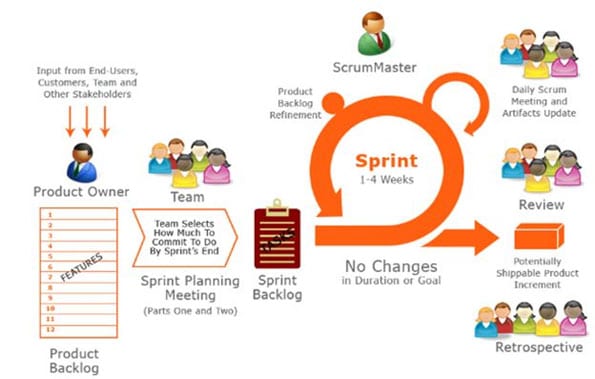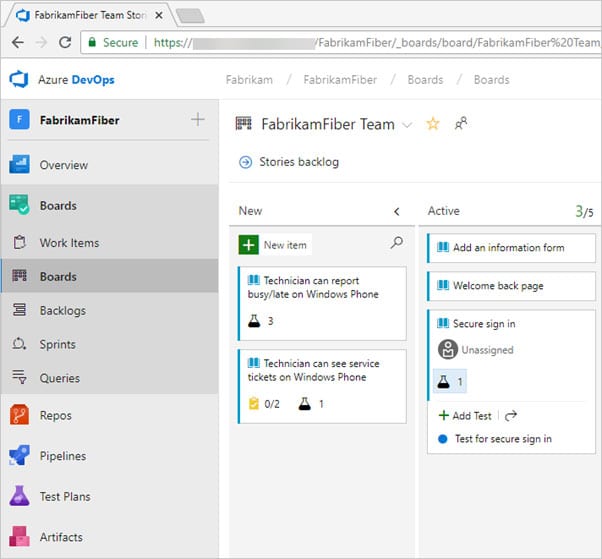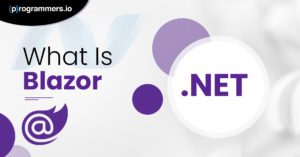Agile-Scrum is the most popular software development methodology these days. From big to small, every organization is working on Agile methods to deliver projects on time. Agile means ‘ability to move quickly’, companies are adopting these quick yet effective ways to create productive solutions.
Here is the basic agenda that clears why adopting agile method is useful:
Developer’s lifecycle
The work of the developer in Agile methodology begins with the interaction with the BA. The BA is responsible for all the documentation, tracking and conveying all the requirements to the developer. This process may lead to confusion or miscommunication but Agile process avoids such situations.
Team Barriers
Team barriers are generally the dependency on other team members for work completion. Sometimes this dependency leads to delays and client dissatisfaction. The blame game starts when there are issues in between the project and mostly the developer is held responsible for maximum issues. Agile methodology fixes this blame game by assigning the work to various teams, hence reminding that software development is not a one man work.
Adoption of Agile methodology
Agile methodology has Agile Scrum which is most commonly used by the developers today. Looking at the above two situations adopting Agile methodology is beneficial. There are two types of approach, one is plan driven and the other is value driven. Today, .NET developers go with value driven approach as it aligns teams very well and helps them receive early feedback.

Value driven Agile methodology
A value driven agile methodology has various aspects that a development team should know properly.
Here are a few concepts to keep in mind:
- Product backlog and sprint backlog: A product backlog is a list of the items or user stories that are to be worked upon by the programmers. A product backlog is also known as a functional specification document, System Requirements Specification Document or Business Requirement Document.
A product backlog is a list of the items or user stories that are to be worked upon by the programmers. A product backlog is also known as a functional specification document, System Requirements Specification Document or Business Requirement Document.
- Scrum ceremonies: Scrum ceremonies begin when the items are added from the product backlog to the sprint backlog. Generally, every sprint takes nearly 2 weeks to complete, within these two weeks following ceremonies take place:

- Sprint Planning: First thing that is followed in any agile approach is sprint planning. In this meeting the team looks at the User Stories or the items of the final product that the Product Owner thinks the team should work upon in the next sprint. The team looks in detail at the given requirements, brainstorms, reviews the work, estimates and assigns the work to team members.
- Daily standup: Daily standup is conducted to know the status of the project. Following questions are asked from the team members: -What did you do yesterday -What will you do today -Are you stuck or blocked
- Sprint Review: Once a task or item is completed, it’s time for a sprint review. This review is to check the user story whether it will be accepted by the owner or not
- Sprint Demo: Sprint demo is conducted to check the work of the team with end to end functionalities.
- Sprint Retrospective: This step gives an opportunity to the development team to discuss the following three things: -What went well? -What went wrong? -What is to be improvised?

Checking work status in Agile Scrum
The status of daily work is recorded in Agile approach and this can be best attained with a Scrum status board. It provides more visibility and tracks each task/activity related to a Sprint Item.

Azure DevOps Server
The other way to track the status is to use Agile tools such as Azure Devops server formely known as TFS (Team Foundation Server). In Azure DevOps server, for planning purposes, you have access to several types of backlogs and boards that support Agile methods—Scrum, Kanban, or Scrumban.
You can create the following and stay updated:
- Product backlog: Used to create stories or requirements.
- Kanban: Used to visualize and manage the flow of work
- Sprint backlogs: Used to plan work to complete during a sprint cycle
- Task board: Used during daily Scrum meetings to review work that’s completed, remaining, or blocked.
This tool is useful as it not only provides reports but also graphical representation of the work status. Project managers and developers share information by tracking work items on the backlogs and boards. The charts and dashboards provide an in-depth picture of the project progress.

Conclusion
Understanding the Agile scrum process for .Net development teams is easy but actually implementing the same is challenging. There are many organizations that follow the Agile process but do not implement it correctly and end up using the old waterfall methods. Agile should be implemented properly to gain the maximum value out of the existing project. It is an amazing methodology for software development to deliver maximum value.





